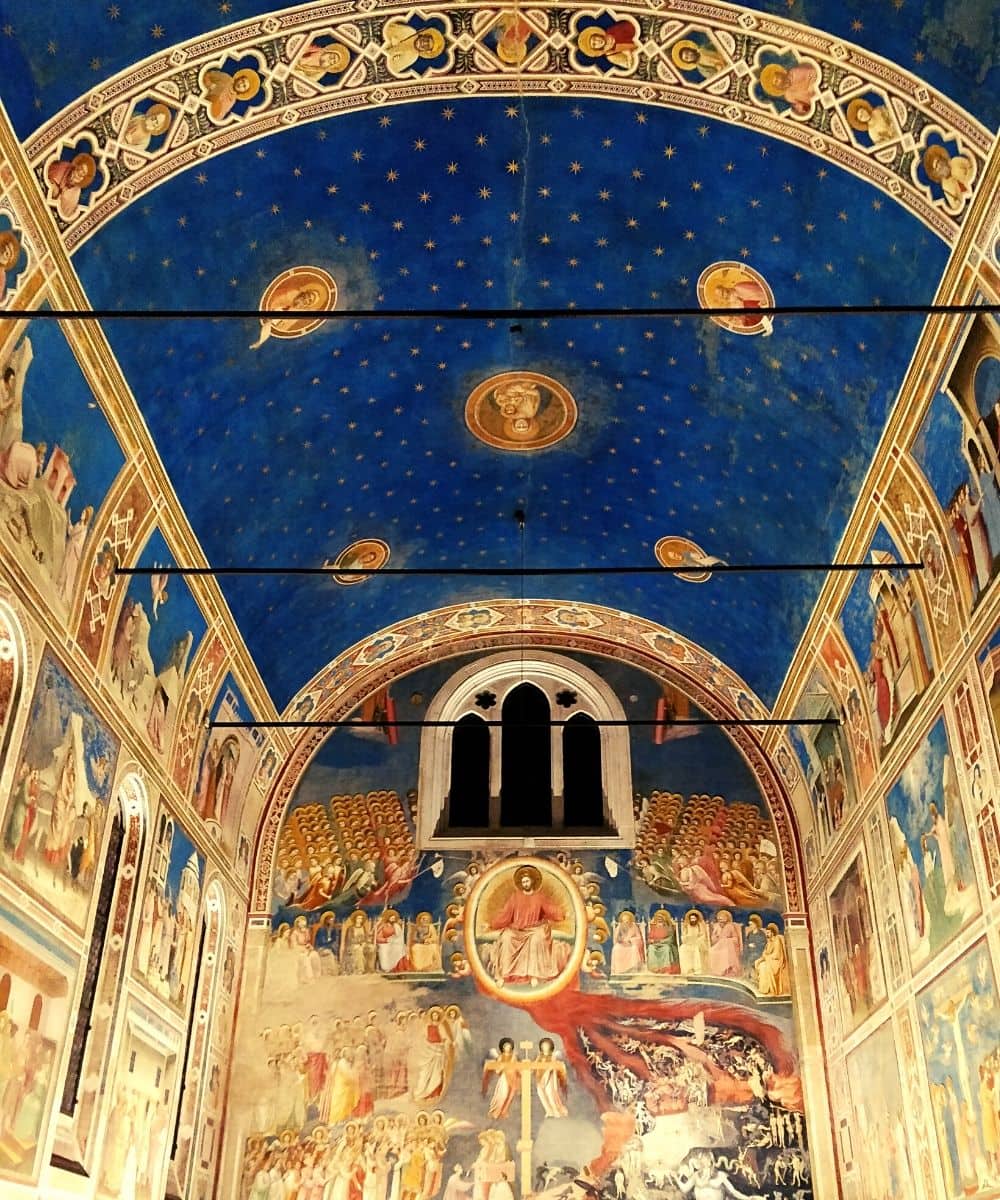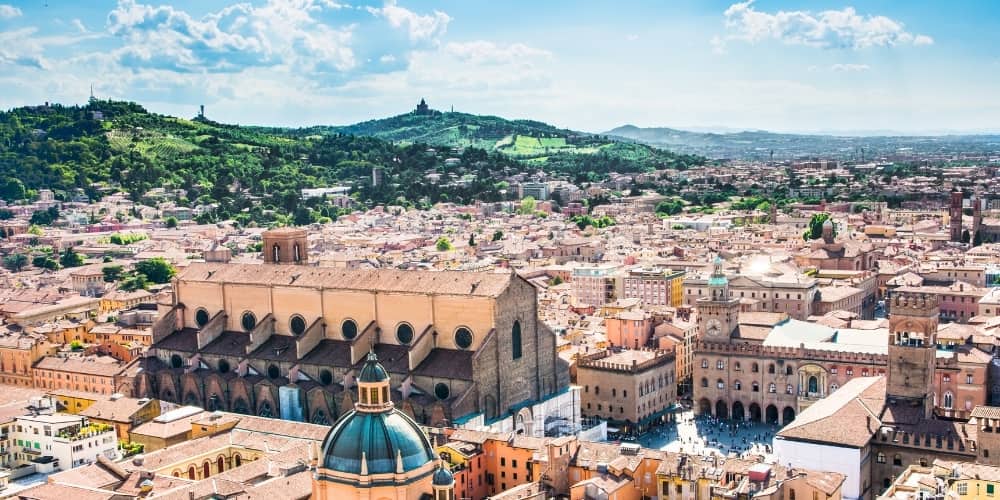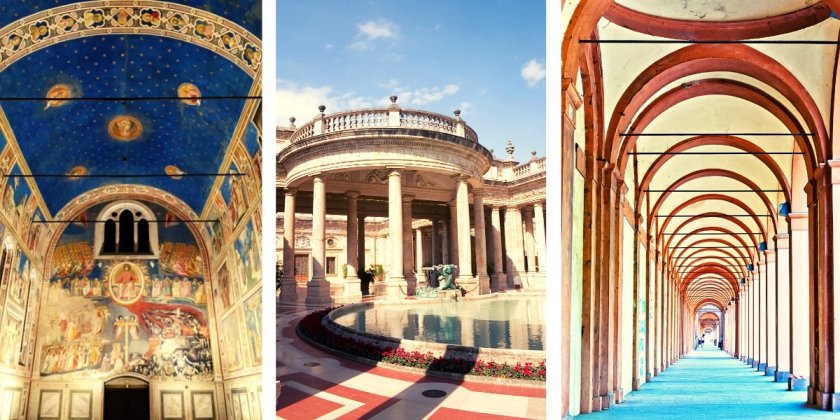The great Unesco World Heritage Committee is taking place in these days, from the Chinese city of Fuzhou, in the eastern part of the country. Many states are connected by the internet with the heart of China (because of the covid) to follow up on 45 candidacies for UNESCO heritage by different nations.
In this sense there is very good news for Italy that sees further growth in its list of heritages, now arrived at 58 of which 53 cultural and 5 naturalistic.

The Frescoes of Padua, Montecatini and also a greater historical center of Florence

After years of work and dossiers sent to Unesco Committees, the Porticoes of Bologna have finally become a World Heritage Site, along with Padua’s fourteenth-century fresco cycles (by Giotto), the inclusion of Montecatini Terme in the list of the "Great Spa Towns of Europe" (a heritage shared with other countries) and new recognition for the city of Florence.
In the city of Padua (Veneto), the entire cycle of frescoes from the 14th century has become a Unesco heritage site. A significant historical and artistic cluster includes eight buildings in the historic centre, including Giotto's Frescoes in the Scrovegni Chapel and those by Niccolò Miretto and Stefano da Ferrara in Palazzo della Ragione, which succeeded a Giotto cycle lost in a fire at the beginning of the 15th century.
Padua thus welcomes its second official recognition after that of 1997: we are talking about the Botanical Garden, the oldest in the world, founded in 1545 and representing excellence in the scientific and historical and artistic fields. The city thus becomes one of the few cities in the world to have two separate heritages on its list, as does Tivoli, which can count on Villa Adriana (added to the list in 1999) and Villa d'Este (recognised two years later, in 2001).
As far as Florence is concerned, the Renaissance city par excellence, we know that its historical centre has been included in the list of heritages since 1982, practically one of the first in Italy.
However, the perimeter of this centre expands and now also includes the Abbey of San Miniato, the Church of San Salvatore al Monte, the Ramps, Piazzale Michelangelo, the Rose Garden, and the Iris Garden.
The beauty of the city, already widely recognized and appreciated worldwide, is therefore legitimized in an even broader and more profound way, including a more significant number of artistic and architectural heritage.
Montecatini Terme

The UNESCO Committee has recognised the site of the Great Spa Cities of Europe, made up of 11 cities in 7 countries: Montecatini Terme in Italy, Baden bei Wien in Austria, Spa in Belgium, Františkovy Lázně, Karlovy Vary, Mariánské Lázně in the Czech Republic, Vichy in France, Bad Ems, Bad Kissingen Baden in Germany and City of Bath in the United Kingdom.
These cities bear witness to the spa culture, a peculiarly European phenomenon, peaked from the 18th to the 1930s.
"Today is a historic day for Italy: Montecatini Terme is inscribed on the UNESCO heritage list," said Undersecretary for Culture Lucia Borgonzoni, "Montecatini Terme, which is part of a transnational candidacy "The Great Spas of Europe" along with 7 other states, is an example of a unique Italian spa system, to be protected and enhanced. (...)".
Bologna rejoices for the recognition

As we have already said, Bologna rejoices, with the city strongly culturally tied to this 62 km of porticos, 42 of which are in the historical centre area. UNESCO finally recognizes them as a unicum from an architectural and structural point of view and what they represent from a social point of view.
An infrastructure of medieval origin that has evolved connecting the city's urban fabric and that today are an immense "private" space that is available to the "public".
A place where people live and walk together, an extraordinary example of the fusion between architecture and human society. A symbol that protects and allows you to walk around the city without an umbrella when it rains or snows: it's useful also to give a bed for the night to those who are less fortunate.
It's a further embrace of Bologna to the people, a caress of a young, open, and extraordinary city.
Calabria and its Beeches Enter the World of Unesco

But it is not only the capital city of Emilia Romagna that rejoices but also other parts of Italy that see more than 8,000 hectares of Italian forests enter the list, with the recognition of ecological features in the national parks of Aspromonte, Gargano, and Pollino.
For the first time, a place in the Calabria Region, located in the Southern Part of the Country, enters the heritages list. The massifs of Aspromonte and Pollino have the oldest beech trees in Europe with more than 600 years of age. Even nature reminds us to want to be protected and celebrated, especially when the environment is the most precious thing we have to live on, not just a consumer resource to be "exploited".
Therefore, this extraordinary natural beauty enters the UNESCO list of "Primordial beech forests of the Carpathians and other regions of Europe". The committee has begun to recognize an immense heritage since 2017: now, they see another spectacular piece added. It's a unique treasure of its kind, all to be known and protected.
About the author
Written on 29/07/2021



Emanuele Castellano
Italy sees further growth in its list of Unesco heritages, now at 58 of which 53 are cultural and 5 naturalistic.